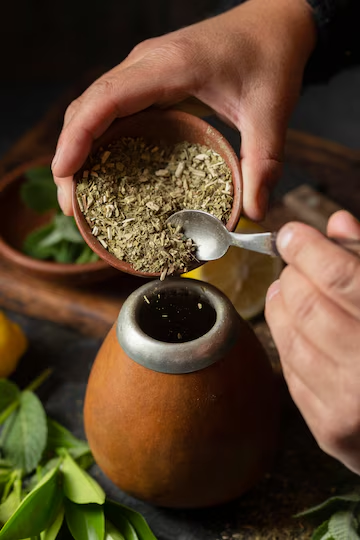GST Rate on Ayurvedic Medicine
- 20 Sep 24
- 15 mins

GST Rate on Ayurvedic Medicine
Key Takeaway
- GST rates for Ayurvedic medicines are either 5% or 12%, depending on whether the product is considered traditional or proprietary.
- Proper classification of Ayurvedic products under GST is crucial for accurate tax application and compliance.
- The implementation of GST has standardized tax rates across states, potentially simplifying the tax structure for Ayurvedic medicines.
- Manufacturers must understand and manage input tax credits effectively to optimize costs and pricing under GST.
- Keeping up-to-date with regulatory changes in GST is essential for Ayurvedic medicine manufacturers to avoid compliance issues and penalties.
GST Rate for Medicines

In India, the Goods and Services Tax (GST) on medicines, including Ayurvedic medicines, is determined by the classification of the product under specific categories based on their use and ingredients. The GST rates for medicines are structured to accommodate the essential nature of pharmaceuticals and to ensure that healthcare remains accessible to all.
Overview of GST Rates for Pharmaceutical Products:
- 0% GST: Certain essential drugs, including some life-saving drugs and those used for specific medical conditions, are exempt from GST.
- 5% GST: Most of the common medicines, including many Ayurvedic medicines that are used for general health benefits, are taxed at a lower rate of 5%. This is to ensure that essential drugs remain affordable for the general population.
- 12% GST: Some specialized drugs that are not considered essential but are important for health care, including certain Ayurvedic preparations that do not qualify for the lower rate, are taxed at 12%.
- 18% GST: A higher rate is applied to some pharmaceutical products that are considered less essential or luxury in nature. This category rarely includes medicines and is more often applied to cosmetics and similar products.
Specifics for Ayurvedic Medicines:
For Ayurvedic medicines, the GST rates are applied based on the composition and the type of product:
- 5% GST is applied to traditional Ayurvedic medicines that are purely composed of herbal ingredients and are commonly used for health preservation and minor ailments.
- 12% GST may apply to proprietary Ayurvedic medicines, which are formulations marketed under a brand name and may include some non-herbal ingredients.
The distinction in GST rates for Ayurvedic products often hinges on whether the product is deemed necessary for basic healthcare. This classification is critical as it influences the affordability and accessibility of these traditional medicines for the average consumer. Manufacturers and consumers alike need to be aware of these distinctions to manage expenses and compliance with tax regulations effectively.
GST Rate on Products Under Category of Ayurvedic Medicine
The classification and GST rates on Ayurvedic medicine products are nuanced, reflecting the diversity and complexity of the products within this traditional medicine system. Understanding these rates is crucial for both consumers and manufacturers to navigate compliance and pricing strategies effectively.
Classification of Ayurvedic Products:
Ayurvedic products are classified under various GST rates depending on their formulation and intended use. These classifications are critical in determining how each product is taxed under the GST framework.
- Pure Ayurvedic Medicines:
- 5% GST: Traditional Ayurvedic medicines that consist entirely of natural ingredients, such as herbs and minerals, fall under this category. These are generally formulations that follow classical Ayurvedic texts and are not branded or patented. They are considered essential for maintaining health and are therefore taxed at a lower rate.
- Proprietary Ayurvedic Medicines:
- 12% GST: This category includes Ayurvedic products that are marketed under a specific brand name and might include some modern ingredients or proprietary blends that deviate from classical recipes. These are considered less essential than purely traditional formulations and thus attract a higher tax rate.
💡If you want to pay your GST with Credit Card, then download Pice Business Payment App. Pice is the one stop app for all paying all your business expenses.
Examples and Implications:
- Classical Ayurvedic Products: Items like Chyawanprash, Ashwagandha tablets, and Triphala churna, when sold without any branding or modification, usually attract a 5% GST. These products are directly linked to classical Ayurvedic texts and are prepared according to traditional methods.
- Branded and Modified Ayurvedic Products: Ayurvedic toothpaste, hair oils, or skin creams that contain Ayurvedic components but are sold as part of a branded range, often fall under the 12% GST rate. The inclusion of non-traditional ingredients or the fact that they are marketed with health benefits that deviate from classical Ayurvedic uses influences this rate.
Understanding for Consumers and Manufacturers:
For consumers, understanding these distinctions helps in making informed choices about purchasing Ayurvedic products, particularly in differentiating between purely traditional formulations and those that are branded or modified, which might be taxed higher.
For manufacturers, it's essential to accurately classify products to ensure proper compliance with GST laws. Incorrect classification can lead to penalties and disrupt business operations. Manufacturers must be diligent in documenting the ingredients and preparation methods to substantiate their tax filings.
Impact of GST on Ayurvedic Medicine
The implementation of the Goods and Services Tax (GST) in India has had significant implications for various sectors, including the Ayurvedic medicine industry. This impact can be observed from multiple perspectives: pricing, market accessibility, and industry compliance.
Effects on Pricing:
The introduction of GST has standardized tax rates across states, which in theory should simplify the tax structure. However, the specific impact on Ayurvedic medicines depends on their prior tax rates pre-GST. Ayurvedic products were previously subjected to a range of tax rates based on state-specific VAT laws, often resulting in cumulative taxes that could be higher or lower than the current GST rates. With the consolidation under GST:
- Lower Tax Rates for Some Products: For many traditional Ayurvedic medicines, the GST has imposed a lower rate (mostly 5%) compared to previous tax structures, which sometimes reached up to 10-12% when combining VAT and other local taxes. This reduction can make these medicines more affordable to the average consumer.
- Higher Tax Rates for Others: However, certain Ayurvedic products, especially those marketed as proprietary or cosmetic, may now face higher tax rates (up to 12%), increasing their cost to consumers.
Market Accessibility:
The standardization of tax rates under GST is intended to ensure a level playing field for manufacturers across different states, which can enhance market accessibility in several ways:
- Streamlined State-to-State Operations: By unifying the tax structure across states, GST has reduced the logistical and administrative burdens previously faced by manufacturers when selling across state lines. This can lead to an expansion of market reach for Ayurvedic medicine producers.
- Improved Supply Chain Efficiency: The input tax credit available under GST allows manufacturers to reduce their costs by claiming a credit for the GST paid on raw materials and services. This efficiency gain can potentially lower the cost of production and increase the competitiveness of Ayurvedic medicines.
Industry Compliance:
GST has also introduced new compliance challenges and opportunities for the Ayurvedic medicine sector:
- Increased Compliance Burden: All entities in the Ayurvedic medicine supply chain must now comply with standardized GST procedures, which require meticulous record-keeping and regular filings. This has increased the operational complexity for smaller manufacturers who may not have the resources to manage these requirements effectively.
- Formalization of the Sector: GST encourages the formalization of industries, including the Ayurvedic medicine sector. This formalization pushes businesses toward more structured operations and financial transparency, which can attract more investment and growth opportunities but also requires adapting to more stringent regulatory standards.
How GST Influences the Pricing of Ayurvedic Medicines?

The Goods and Services Tax (GST) has a significant influence on the pricing of Ayurvedic medicines in India. This impact is multifaceted, affecting everything from production costs to the final retail price consumers pay. Understanding these dynamics is crucial for both manufacturers and consumers in the Ayurvedic medicine sector.
Direct Impact on Pricing
- Unified Tax Rate: Prior to the implementation of GST, the taxation on medicines, including Ayurvedic products, varied widely across different states due to varying VAT (Value Added Tax) rates and additional levies. GST has standardized these rates to either 5% or 12% depending on the type of Ayurvedic medicine, which simplifies the tax structure but also alters pricing. For some products, this has resulted in lower prices due to a lower unified tax rate; for others, it has led to an increase where the previous tax rate was lower than the current GST rate.
- Removal of Cascading Taxes: GST eliminates the cascading effect of taxes, where tax was previously levied on top of tax throughout the supply chain. This removal can potentially reduce the cost of production as manufacturers now pay a single, transparent tax. Theoretically, this should lower the cost of Ayurvedic medicines to the end consumer.
Indirect Impact through Input Tax Credit
- Input Tax Credit (ITC): One of the key features of GST is the input tax credit, which allows manufacturers to claim credit for the tax paid on inputs (raw materials, services, etc.) used in the production of Ayurvedic medicines. This can reduce the overall cost of production, as manufacturers can offset these credits against their output tax liability. However, to fully benefit from ITC, manufacturers need to ensure that their suppliers are also GST-compliant, which can be challenging, especially in a sector that may include small-scale and traditional suppliers.
- Increased Compliance Costs: While the input tax credit system is beneficial, it also requires strict compliance and documentation. For smaller Ayurvedic manufacturers, these increased compliance costs can offset some of the benefits of the input tax credit, potentially leading to higher prices if these costs are passed on to consumers.
Price Sensitivity and Market Competition
- Competitive Pricing: The Ayurvedic medicine market is highly competitive, with numerous players ranging from traditional family-owned businesses to large-scale pharmaceutical companies. The implementation of GST has forced all manufacturers to reconsider their pricing strategies. Companies that efficiently manage their GST compliance and maximize their ITC benefits may be able to offer more competitive pricing, influencing overall market prices.
- Consumer Price Sensitivity: Consumers of Ayurvedic medicines are often price-sensitive, especially in segments where these medicines are considered essential health commodities. Any changes in pricing, whether increases or decreases due to GST, can significantly impact consumer demand and market dynamics.
What Ayurvedic Medicine Manufacturers Need to Know About GST Rates
For manufacturers of Ayurvedic medicines in India, understanding the nuances of the Goods and Services Tax (GST) is crucial for ensuring compliance, optimizing pricing strategies, and maintaining profitability. Here’s what Ayurvedic medicine manufacturers need to know about navigating GST rates effectively.
Understanding GST Rates Applicable to Ayurvedic Medicines
- Differentiated GST Rates: Ayurvedic medicines are generally subjected to two main GST rates:
- 5% GST is levied on traditional Ayurvedic medicines that are prepared according to the formulas described in ancient texts and consist solely of natural ingredients.
- 12% GST applies to proprietary Ayurvedic medicines that might include modern ingredients or are marketed under a brand name, which are not strictly traditional but are based on Ayurvedic principles.

Manufacturers need to categorize their products accurately to ensure they are applying the correct GST rate.
Compliance and Documentation
- Accurate Classification: It's essential for manufacturers to classify their products correctly under the GST regime. This involves understanding whether a product falls under traditional or proprietary classifications, which affects the GST rate applied.
- Maintaining Detailed Records: Proper documentation of all transactions, including purchases, sales, and inventories, is mandatory under GST. This is crucial for claiming input tax credits (ITC) which can significantly reduce costs.
- Input Tax Credit (ITC): Manufacturers can reduce their tax liability by claiming ITC on the GST paid on raw materials and services used in the production process. To fully benefit from ITC, all inputs must be sourced from GST-compliant vendors.
Regulatory Updates and Compliance
- Staying Informed: GST rates and regulations are subject to change based on policy updates. Manufacturers must stay informed about any changes in the tax structure or compliance requirements through official GST portals or professional GST consultants.
- Filing Returns Timely: Regular and timely filing of GST returns is critical. This not only ensures compliance but also allows manufacturers to maintain a good credit standing, which is helpful for business transactions and financial arrangements.
Impact on Pricing and Market Strategy
- Cost Management: Understanding the impact of GST on overall costs is vital for pricing strategies. Effective management of ITC and compliance costs can help in competitive pricing of the products.
- Market Expansion: The uniform GST across states offers an opportunity for manufacturers to expand their market presence without worrying about varying state taxes which were a barrier in the pre-GST era.
Preparing for Audits and Legal Scrutiny
- Audit Readiness: With GST, the likelihood of audits by tax authorities has increased. Manufacturers should ensure that all their GST filings are accurate and that documentation is readily available to support their claims during audits.
- Legal Compliance: Consulting with legal experts in GST can help manufacturers navigate complex scenarios and avoid potential legal pitfalls related to tax filing errors or misclassification of products.
What is the HSN code for Ayurveda?
HSN codes, or Harmonized System of Nomenclature codes, are used globally to classify and define products in international trade. In India, these codes are crucial for determining the applicable Goods and Services Tax (GST) on various products, including Ayurvedic medicines.
HSN Codes for Ayurvedic Products
Ayurvedic products are typically classified under several HSN codes based on their type and usage. Here are the general categories and their corresponding HSN codes:
- HSN Code 3003: This code is used for medicaments (excluding goods of heading 3002, 3005, or 3006) consisting of two or more constituents which have been mixed together for therapeutic or prophylactic uses, not put up in measured doses or in forms or packings for retail sale, including Ayurvedic, Unani, Siddha, or homoeopathic medicines.
- HSN Code 3004: This code is specifically for medicaments (excluding goods of heading 3002, 3005, or 3006) consisting of mixed or unmixed products for therapeutic or prophylactic uses, put up in measured doses (including those in the form of transdermal administration systems) or in forms or packings for retail sale, including Ayurvedic, Unani, Siddha, or homoeopathic medicines.
Understanding HSN Codes in Ayurvedic Context
- Traditional Ayurvedic Medicines: Most traditional Ayurvedic medicines that are not patented or proprietary fall under HSN code 3003. These include various herbs, powders, and oils that are used according to Ayurvedic texts and are sold in bulk or without specific dosage instructions.
- Proprietary Ayurvedic Medicines: More modern, proprietary Ayurvedic medicines that are often sold under a brand name and are marketed for specific health benefits typically fall under HSN code 3004. These are usually prepared in dosages or packaged forms intended for retail and direct consumer use.
Importance of Correct Classification
Proper classification using the right HSN code is essential for several reasons:
- Accurate GST Application: The correct HSN code ensures that the applicable GST rate is accurately applied to the product. For Ayurvedic medicines, this could be either 5% or 12%, depending on the product’s classification.
- Compliance and Auditing: Using the correct HSN code helps in compliance with tax laws and reduces the risk of errors during audits.
- International Trade: For manufacturers exporting Ayurvedic products, the correct HSN code facilitates smoother customs processes and compliance with international trade regulations.
 By
By 
















